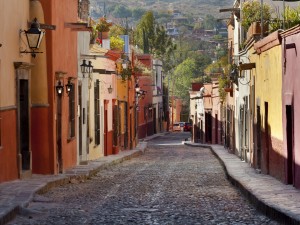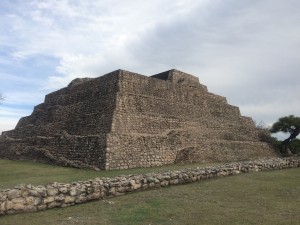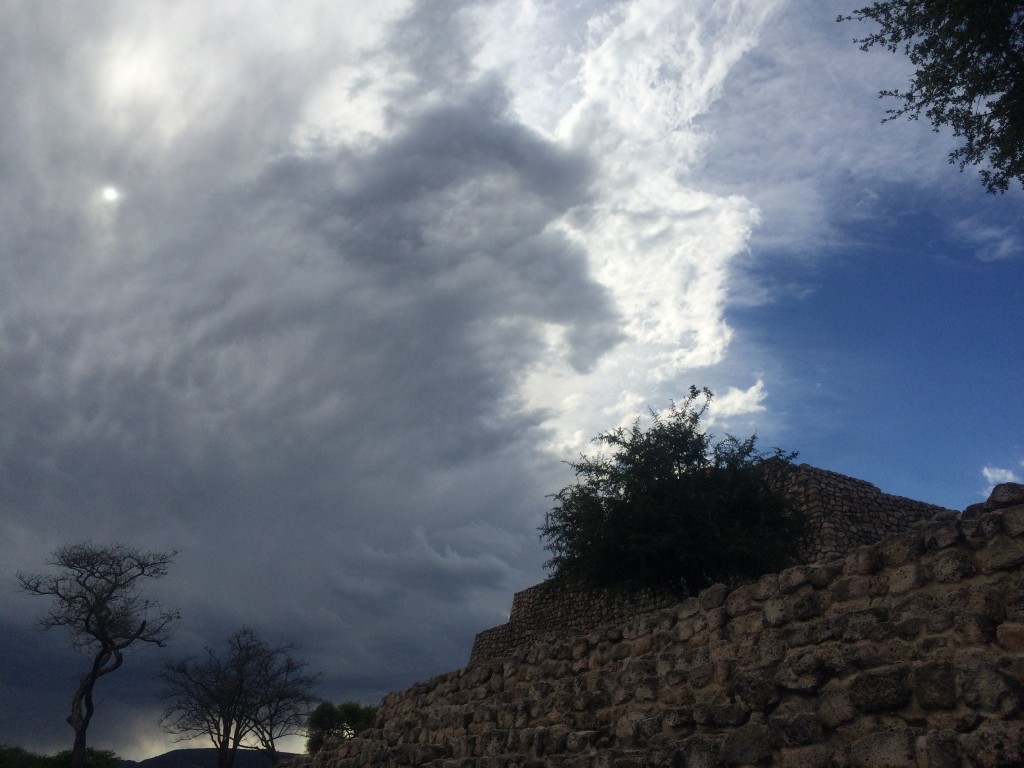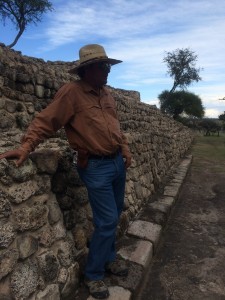 I recently returned from my second visit to San Miguel de Allende, a beautifully restored Colonial town in central Mexico. I stayed at Casa San Miguel, the fabulous home of my friend, Beth James. Casa San Miguel, and San Miguel itself, will transport you back in time to Spanish Colonial Mexico.
I recently returned from my second visit to San Miguel de Allende, a beautifully restored Colonial town in central Mexico. I stayed at Casa San Miguel, the fabulous home of my friend, Beth James. Casa San Miguel, and San Miguel itself, will transport you back in time to Spanish Colonial Mexico.

The city’s winding picture-postcard cobblestone streets are lined with crayon-colored buildings. Baroque colonial mansions, like Casa San Miguel, hide tiled patios, fountained gardens and intricate balconies behind vine covered walls. And, of course, La Parroquia de San Miguel Arcángel – San Miguel’s famous cathedral – lights up the whole town at night. If you’re lucky – as I was on my first visit – you might even witness one of San Miguel’s impromptu mariachi contests filling the main jardin!
 But for a taste of the original history of this area of Mexico, a trip to Cañada de la Virgen pyramids is essential. Located just about 25 kilometers outside of San Miguel de Allende, Cañada de la Virgen (Glen of the Virgin) is an ecological and archaeological site that contains recently “discovered” pre-Columbian pyramids!
But for a taste of the original history of this area of Mexico, a trip to Cañada de la Virgen pyramids is essential. Located just about 25 kilometers outside of San Miguel de Allende, Cañada de la Virgen (Glen of the Virgin) is an ecological and archaeological site that contains recently “discovered” pre-Columbian pyramids!
As our guide, archaeologist and professor, Albert Coffee, explained to us, the Cañada de la Virgen pyramids aren’t just one of the many small ruins scattered throughout Mexico. They’re VERY significant. They aren’t Mayan or Aztec. They were built by the Otomi, a Toltec tribe, around 540 -1050 AD. According to Professor Coffee, the discovery of pyramids this old in this part of Mexico, changed what archaeologists thought they knew about ancient Mexico. Plus, they are celestial pyramids…using the rotation of the moon and stars to create a living calendar in stone. This means that astronomy was well understood long before the Mayan civilization!

The day we arrived at Cañada de la Virgen, the weather was pleasant. And it’s a good thing, because you have to park a long way from the entrance to the pyramid complex and then walk a cobblestone road in. The pyramids sit on land that is owned by the Mexican government today, but not long ago it was part of a private homestead. An agreement was worked out…the land the pyramids sit on was given over to the government, and the former “owner” permits visitors to traverse her remaining property to get to them. Cooperation. If only the rest of the world could take the lesson!
As I said, our guide that day was Professor Albert Coffee. Professor Coffee was part of the original team that excavated the pyramid site. It turns out he’s originally from Baton Rouge, Louisiana…and once he discovered that our group was from within 20 miles of where he grew up, the clever wit along with historical facts began to flow.
Professor Coffee’s enormous respect for the Cañada de la Virgen pyramids, and the people who built them, shows clearly as he explains their creation and use in wonderful detail. The first thing that strikes you about them is that they are HUGE. You are encouraged to climb them, if you’re able, and the view from the top out across the valley is outstanding. Second, it’s hard to imagine that stone structures of this size were entirely built by hand, but they were. The wheel was unknown in 540-1050 AD, and there were no beasts of burden.
While there are several pyramids with different purposes, the main structure is the celestial time keeper, and was the most fascinating to me. Its alignment with the sun, moon and planets marks key dates in the Otomi calendar, including the best days to plant crops, the best days to harvest and so on.
In addition to serving as an agricultural and spiritual time keeper, the pyramids were a retreat for visiting priests and astronomers and a burial ground for elite residents. There are areas that once held reflecting pools to give the Otomi another view to study the heavens; and areas where pottery and other evidence of daily life and even skeletal remains of children and adults have been found – the oldest dating from 770-440 BC! You can learn much more about Cañada de la Virgen pyramids on Professor Coffee’s web site: http://www.albertcoffeetours.com.

As we headed back to San Miguel de Allende and the comforts of Casa San Miguel that afternoon, I couldn’t help but reflect on the ancient mysteries that Professor Coffee had revealed to us. Now I had two very different periods in which to imagine life in the San Miguel area, both equally important to the historical development of this magical part of Mexico. For those who plan to visit San Miguel…I cannot recommend Casa San Miguel or Professor Coffee’s tour of the pyramids enough. Casa San Miguel is beyond perfection, and visiting the pyramids with Professor Coffee is like traveling with a very learned old friend who wants to share something important with you that he has discovered!

